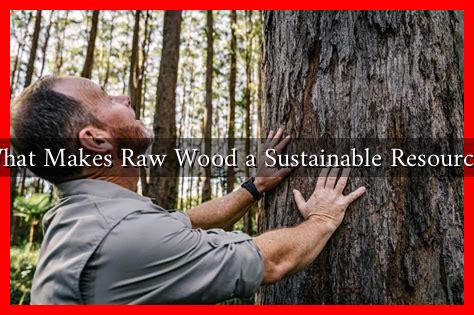-
Table of Contents
What Makes Raw Wood a Sustainable Resource?
In an era where sustainability is at the forefront of environmental discussions, raw wood stands out as a renewable resource that offers numerous ecological benefits. As society seeks alternatives to non-renewable materials, understanding the sustainability of raw wood becomes crucial. This article explores the characteristics that make raw wood a sustainable resource, supported by examples, statistics, and case studies.
The Renewable Nature of Wood
One of the primary reasons raw wood is considered sustainable is its renewable nature. Trees, when managed responsibly, can be harvested without depleting the resource. Here are some key points regarding the renewability of wood:
- Growth Cycle: Trees can grow back over time, with many species reaching maturity in 20 to 50 years, depending on the type and environmental conditions.
- Reforestation: Sustainable forestry practices include replanting trees after harvesting, ensuring that forests continue to thrive.
- Carbon Sequestration: Trees absorb carbon dioxide from the atmosphere, helping to mitigate climate change. A mature tree can absorb approximately 48 pounds of CO2 annually.
Responsible Forestry Practices
To ensure that raw wood remains a sustainable resource, responsible forestry practices are essential. These practices include:
- Selective Logging: Instead of clear-cutting, selective logging allows for the harvesting of specific trees while preserving the overall ecosystem.
- Certification Programs: Organizations like the Forest Stewardship Council (FSC) and the Sustainable Forestry Initiative (SFI) certify sustainably managed forests, ensuring that wood products come from responsibly harvested sources.
- Community Involvement: Engaging local communities in forestry management can lead to better conservation practices and economic benefits for those communities.
Environmental Benefits of Using Raw Wood
Utilizing raw wood has several environmental advantages that contribute to its sustainability:
- Biodegradability: Unlike synthetic materials, wood is biodegradable, meaning it can decompose naturally without harming the environment.
- Energy Efficiency: Wood is an energy-efficient material, requiring less energy to produce compared to steel or concrete. For instance, producing one ton of steel emits approximately 1.8 tons of CO2, while wood production has a significantly lower carbon footprint.
- Insulation Properties: Wood has natural insulating properties, which can lead to reduced energy consumption in buildings, further lowering greenhouse gas emissions.
Case Studies: Successful Sustainable Wood Initiatives
Several countries and organizations have successfully implemented sustainable wood initiatives that serve as models for others:
- Sweden: Sweden has a long history of sustainable forestry, with over 80% of its forests certified as sustainably managed. The country has implemented strict regulations to ensure that logging does not exceed growth rates.
- Canada: Canada’s forestry sector is heavily regulated, with a focus on maintaining biodiversity and ecosystem health. The country has committed to reforesting areas affected by logging, with a goal of planting billions of trees by 2030.
- New Zealand: New Zealand’s plantation forests are managed for sustainability, with a focus on producing high-quality timber while preserving the natural environment.
Challenges and Considerations
While raw wood has many sustainable attributes, it is essential to acknowledge the challenges associated with its use:
- Deforestation: Unsustainable logging practices can lead to deforestation, habitat loss, and biodiversity decline.
- Climate Change: Climate change can affect forest health and growth rates, potentially impacting the availability of raw wood in the future.
- Market Demand: Increasing demand for wood products can put pressure on forests, necessitating careful management to ensure sustainability.
Conclusion
Raw wood is a sustainable resource that offers numerous environmental benefits when managed responsibly. Its renewable nature, coupled with responsible forestry practices, makes it an attractive alternative to non-renewable materials. By supporting sustainable wood initiatives and choosing certified wood products, consumers can contribute to the preservation of forests and the health of our planet. As we move towards a more sustainable future, embracing raw wood as a resource is not just beneficial; it is essential.
For more information on sustainable forestry practices, visit the Forest Stewardship Council.




